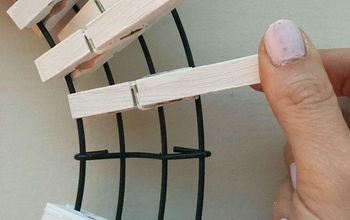How do I clean mold out of a sandstone/chalk basement?
So I, 24f, live with my parents in a house that’s 150 years old. The basement has always been a problem even before we had it. My dad has tasked me to do clean it, tidy up any mess, remove anything that has mold and remove the mold itself. If it goes well and I can make it somewhat habitable, then I would love to figure out how to make it either a chill out area or a place to make it a hobby area.
anyone have suggestions on how to handle the moisture problem? We already have a dehumidifier, any cheap options are greatly accepted.
I can also provide pictures of what we got going on. Note that my great grandfather did all repairs himself and, yes, we are going to get the fuse box and wires redone by professionals. We just want to do what we can ourselves
thank you for any advice in advance
Related Discussions
How to get rid of mice?
We seem to have some unwelcome Mickeys and Minnies in our house. What is the best way to get rid of them?
How to remove popcorn ceiling with asbestos?
I want to remove my popcorn ceiling, but it has asbestos in it. How do I go about this safely?
How to caulk baseboard gaps?
How do I fill gaps at baseboard, should I caulk? If so, does anyone know how to caulk baseboards?
How to fix squeaky hardwood floors?
How do I fix squeaky hardwood floors?
How do I clean black mold off sheetrock and concrete?
It's everywhere.
Why does water drain out of my chimney clean out in the basement?
in the winter when the furnace is running water drains out of the chimney clean out in the basement..why is water draining out of my chimney?





Do you have any water leaks in the basement?
Do you know where those leaks are coming from?
We applied a coat of Ug Lock on our cinder block skirting and haven't had any problems with moisture.
What kind of floor does the basement have?
Can you air it out or does it have ventilation?
What did you mean by "the basement has always been a problem even before we had it" mean?
You need to look at drainage around the foundation and regrade to get water to run away from the house. Gutters are also a good idea. The broken windows need to be repaired. Opening the windows on nice days will help with the ventilation problem.
New windows will definitely help you with the leaks around and through them.
Bring in professional contractors and get their opinions on what to do to handle the moisture from the walls problem. You can also use Damp Rid bags hung about along with the dehumidifier, which you probably will empty manually.
For the sump pump, make sure where it empties from the foundation is far enough away so it does not percolate back in.
As an aside, years back when we were in the housing market, we looked at a beautiful house with a lush green lawn. Fortunately we came in the rain to see the sump pump running and all the water from it deposited over the lawn near the foundation, plus it was at a low point on a slope so the rainwater from the surrounding houses pooled there too. It was at the lowest point on the block. We really liked the house, it had many quality points. We called it the $89,000 sieve and that was the only thing bad about the house.
Buckets of damp rid will help with removing excess moisture. Add a fan and leave open as much as possible.
You are fighting a losing battle until you get the incoming water problem handled. That may take a professional. After that problem is remediated, there are several ways to help keep the musty smell under control. Charcoal BBQ briquettes placed in open containers throughout the area helped us with combating the problem in an 1898 house we owned at one time. You want the sump-pump water to be removed to as far away from the home as possible, otherwise you may be re-saturating the soil close to the home which in turn caused she sandstone to absorb it again. Broken windows need to be replace to make the area weather resistant.
Hi Emma, hope this helps you out, it's just vinegar, but it is safe around pets and kids, and will leave a fresh smell once it dries completely,
https://www.youtube.com/watch?v=Q5wM8xSMM9M
Hi, This is a job for the professionals! Too much for one person. need to have a survey done to determine where the water is coming from and a plan of action on how to solve it before any work can be done on the house. Eventually the walls that are getting wet will crumble if nothing is done. If you hope to use the area without the work being done, I'm afraid it will not be safe for your health!
If this has long been a problem and there’s mold down there, I would not advise you handling this yourself. This is a task for professionals. It’s a health and safety issue.
One of the best tricks I've seen to dry out a slightly damp basement is to remove one of the window/vents and simply put in a cheap window fan....https://www.youtube.com/watch?v=u7xvbYbG5Ww You can also buy the white double fans with one fan to exhaust and the other to blow in fresh air.
This guy has tons of videos on drains and controlling water.... https://www.youtube.com/watch?v=2utv-U-eejg
Did you put up a moisture barrier a plastic sheet between walls and inside walls
There may be some helpful info here! https://homeguides.sfgate.com/how-to-remove-mold-from-sandstone-12446072.html